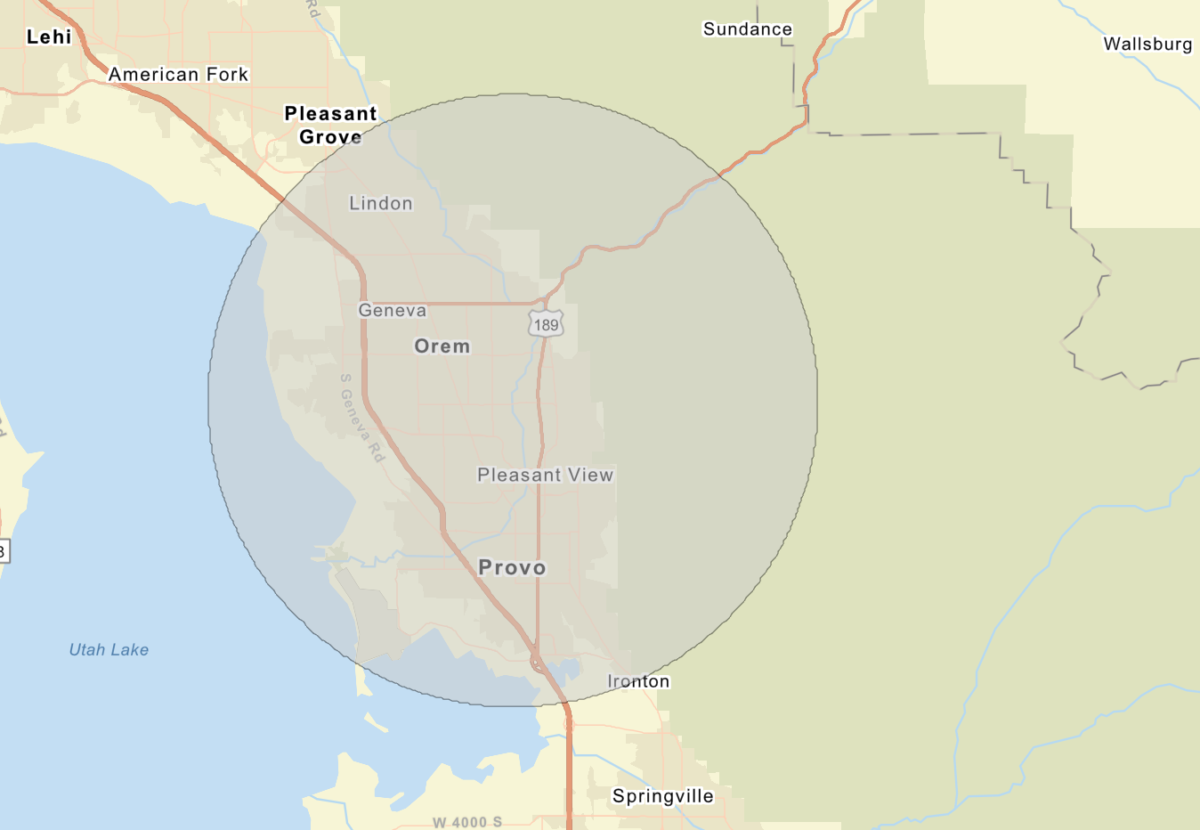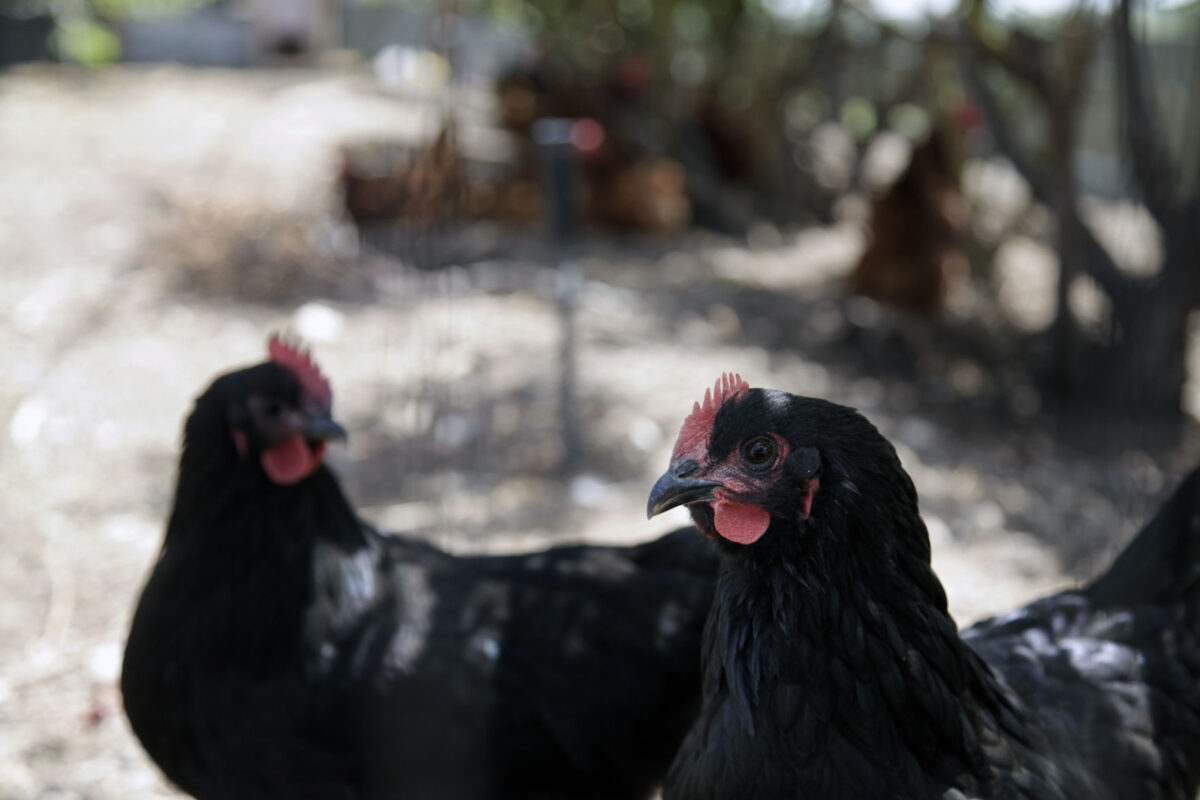Avian flu detected in small groups of birds in Utah County
- A map of Utah County shows the area affected by avian flu. The affected area is circled.
- Chickens roam around a rose garden in American Fork on Friday, July 8, 2016.

Screenshot via Utah Bureau of Land Management map
A map of Utah County shows the area affected by avian flu. The affected area is circled.
A letter from the Utah Department of Agriculture and Food on Monday confirmed that a small backyard flock of birds in Utah County was confirmed to have a highly pathogenic avian influenza (HPAI).
“Our state veterinarian’s office was notified of symptomatic birds in Utah County and our team was immediately dispatched to assess the situation,” said Utah State Veterinarian Dean Taylor. “Proper steps have been taken to prevent further spread of the disease.”
Since February, there have been report of avian flu in 28 states. Locations in Utah, like the Tracy Aviary in Salt Lake City, are taking extra precautions while keeping most exhibits open to the public, according to aviary officials.
UDAF officials have worked closely with the United States Department of Agriculture’s Animal and Plant Inspection Service on their incident response.
The area in which the birds were located has been quarantined and the infected birds have been depopulated to prevent further spread of the disease. It appears the area of concern is close to Utah Lake, in the central part of the county.

Chris Samuels, Daily Herald file photo
Chickens roam around a rose garden in American Fork on Friday, July 8, 2016.
As part of existing avian influenza response plans, UDAF and its federal partners are working jointly on additional surveillance and testing in areas around the affected flock.
Anyone with birds in Utah County is asked to vigilantly watch their flock for symptoms of HPAI, which include high death loss, nasal discharge, decreased appetite or water consumption and lack of coordination in birds.
If your birds are experiencing any of these symptoms, please contact the state veterinarian’s office immediately via email at statevet@utah.gov. According to the U.S. Centers for Disease Control and Prevention, the recent HPAI detections do not present an immediate public health concern.
No human cases of this strain have been detected in the United States. As a reminder, the proper handling and cooking of all poultry and eggs to an internal temperature of 165 F is recommended as a general food safety precaution.
Anyone involved with poultry production — from the small backyard to the large commercial producer — should review their biosecurity activities to assure the health of their birds.
APHIS has materials about biosecurity, including videos, checklists, and a toolkit available online at https://www.aphis.usda.gov/aphis/ourfocus/animalhealth/animal-disease information/avian/defend-the-flock-program/dtf-resources/dtf-resources.





